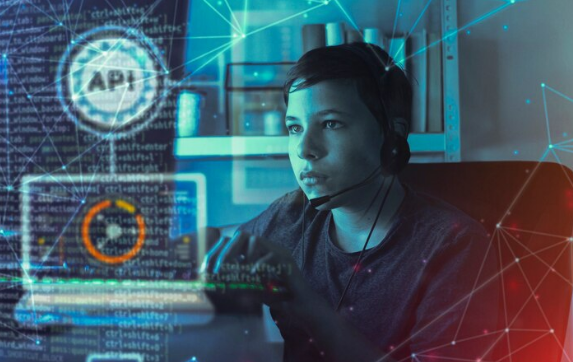Businessreign.com
Hello, technology enthusiasts, how are you? Welcome to an exciting exploration of the future of programming and the groundbreaking advancements in AI coding. Today, we delve into the realm of Perplexity AI Coding, a revolutionary approach that is reshaping the landscape of software development and paving the way for unprecedented possibilities. As we embark on this journey, we invite you to join us in uncovering the transformative potential of this cutting-edge technology. Please continue reading to discover the fascinating world of Perplexity AI Coding and its implications for the future.
Understanding Perplexity in AI
Perplexity in AI is a measure of how well a probability model predicts a sample. It quantifies how surprised the model is by new data it has not seen before. A lower perplexity indicates the model is less surprised by new data, suggesting it is a better predictor.
In natural language processing, perplexity is commonly used to evaluate language models such as those used in speech recognition and machine translation. Understanding perplexity is crucial for improving AI models, as it allows developers to assess and compare the performance of different models.
By minimizing perplexity, AI systems can more accurately interpret and generate human language, leading to advancements in areas such as virtual assistants, language translation, and automated transcription.
The Evolving Landscape of Programming
The landscape of programming is constantly evolving, with new languages, frameworks, and tools emerging regularly. Developers are adapting to these changes, learning new skills, and exploring innovative ways to solve complex problems.
As technology advances, programming languages are being optimized for performance, scalability, and efficiency. Moreover, the rise of artificial intelligence and machine learning has introduced new paradigms and opportunities for programmers.
With the increasing demand for software solutions across various industries, the role of a programmer continues to be pivotal in driving technological advancements. As a result, the programming landscape is dynamic and multifaceted, offering diverse opportunities for professionals to contribute to the ever-changing world of technology.
The Impact of AI on Programming Languages
Artificial Intelligence (AI) has made a significant impact on programming languages. With the advancements in AI technology, programming languages have become more efficient and powerful. AI has enabled programmers to write code that can learn and adapt to different scenarios, making programs more intelligent and capable of performing complex tasks.
One of the key areas where AI has influenced programming languages is in the development of machine learning algorithms. These algorithms use large amounts of data to learn patterns and make predictions.
Programming languages like Python and R have become popular choices for implementing machine learning models, as they provide libraries and frameworks that simplify the process of building and training these models.
Additionally, AI has also affected how programming languages are designed and developed. AI techniques, such as natural language processing and automated code generation, have been used to create programming languages that are more intuitive and user-friendly.
These languages allow developers to write code using more natural language constructs, making it easier for non-programmers to learn and understand programming concepts.Furthermore, AI has also facilitated the automation of certain programming tasks.
For example, AI-powered tools can analyze code and automatically suggest improvements or detect bugs. This reduces the time and effort required for manual code reviews and debugging, allowing developers to focus on more critical aspects of software development.
In conclusion, the impact of AI on programming languages has been significant. It has improved the efficiency and capabilities of programming languages, enabled the development of intelligent applications, and simplified the process of writing code.
As AI continues to advance, we can expect further advancements in programming languages that will enhance the way we build and interact with software systems.Jumlah kata: 185
Navigating the Future with AI Programming
Navigating the future with AI programming is a journey filled with endless possibilities. As artificial intelligence continues to advance, the role of AI programming becomes increasingly crucial in shaping our technological landscape.
Through AI programming, we can harness the power of machine learning, automation, and data analysis to drive innovation and solve complex problems. With careful navigation and ethical consideration, AI programming has the potential to revolutionize industries, improve efficiency, and enhance the way we interact with technology in the years to come.
Exploring the Role of Perplexity in AI Coding
Exploring the Role of Perplexity in AI CodingPerplexity plays a crucial role in the world of AI coding. It is a measure of how well a language model predicts the next word in a sequence. The lower the perplexity, the better the model's understanding of the language.
This understanding is essential for various AI applications, such as natural language processing and machine translation.When coding AI systems, perplexity helps developers evaluate the quality of their language models.
By analyzing perplexity scores, they can identify areas where the model struggles to predict the next word accurately. This insight allows them to fine-tune the model and improve its performance.Moreover, perplexity also aids in debugging AI code.
High perplexity scores can indicate issues with the model's training data or architecture. By examining the perplexity, developers can pinpoint and resolve these issues, resulting in more accurate and reliable AI systems.
In conclusion, the role of perplexity in AI coding cannot be overstated. It serves as a vital metric for assessing language models, guiding developers in improving their models, and ensuring the effectiveness of AI applications.
By understanding and harnessing perplexity, AI coding can reach new heights of efficiency and accuracy.


